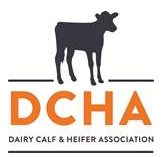
 The process of pasteurizing colostrum is gaining popularity among calf raisers. Kansas State dairy specialist Mike Brouk says there are several things you should keep in mind when collecting, processing and storing colostrum.
The process of pasteurizing colostrum is gaining popularity among calf raisers. Kansas State dairy specialist Mike Brouk says there are several things you should keep in mind when collecting, processing and storing colostrum.Clean collection equipment. The first thing you need to think about is the collection equipment. "No. 1 it needs to be clean," Brouk said in a recent "Milk Lines" audio segment, co-produced by the Department of Communications at Kansas State University and the K-State Radio Network. Making sure equipment is not contaminated with bacteria will help prevent contamination of the colostrum that you collect into it. After collection, process the colostrum immediately or start it into a cooling process.
Quality counts. The importance of colostrum quality can't be stressed enough. Remember to check the level of antibodies in the colostrum to make sure the quality is excellent.
Processing. Cleanliness and proper use of colostrum processing equipment is vital to calf health and performance. "The pasteurization unit needs to be clean, just like the rest of our milking equipment to control the amount of bacteria that might grow on that surface," Brouk says.
Storage. Once pasteurization is complete, the colostrum needs to be fed or cooled, or possibly even frozen. Remember, just because you pasteurize colostrum, it does not replace good animal husbandry techniques. "We still need to do an excellent job of managing our calves and watching for signs of disease and treating them quickly," Brouk says. "Just because we've pasteurized colostrum does not take away that responsibility we have to the calves."
10.09.2013